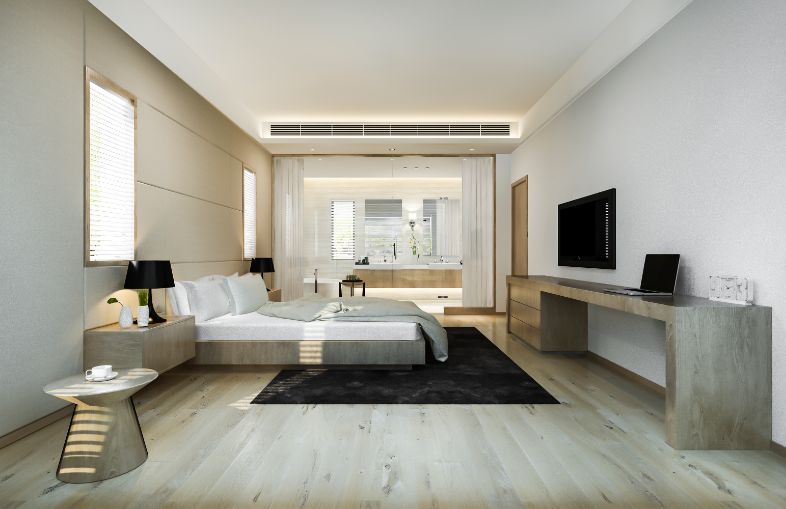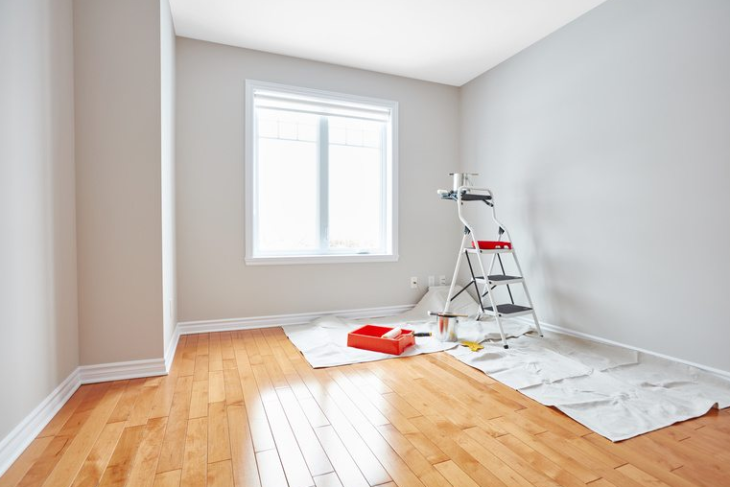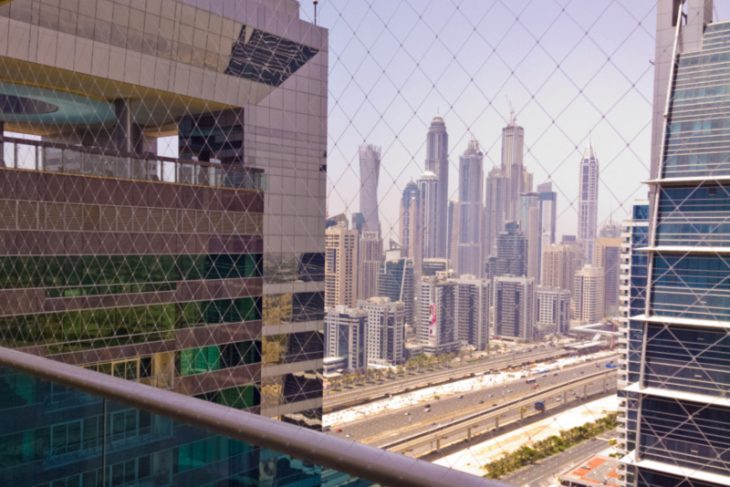
False ceilings are increasingly popular in both residential and commercial spaces, providing aesthetic appeal, energy efficiency, and a means of concealing infrastructure like wiring and ducts. Especially in a climate like Dubai’s, where high temperatures and intense sunlight are common, false ceilings play a critical role in enhancing indoor comfort and energy savings. However, the time required to install a false ceiling can vary depending on several factors, from materials and design complexity to the room size. In this article, we’ll break down everything you need to know about false ceiling installations in Dubai, including the typical timeline, key influencing factors, and useful tips to streamline the process.
What Is a False Ceiling?
Definition and Purpose
A false ceiling, also known as a drop ceiling or suspended ceiling, is a secondary ceiling installed below the main structural ceiling. Its primary purpose is to improve aesthetics, add insulation, and hide electrical wiring, pipes, and air conditioning ducts. In addition to enhancing the room’s appearance, false ceilings can improve acoustics, making them ideal for both homes and offices.
Common Materials Used
- Gypsum: A popular choice, gypsum is lightweight, fire-resistant, and provides a smooth finish.
- PVC: Known for durability and water resistance, PVC ceilings are ideal for moisture-prone areas.
- Wood and Metal: For a touch of luxury, wood and metal offer sophistication but are often more costly.
Benefits of Installing False Ceilings
Improved Energy Efficiency
False ceilings provide an additional layer of insulation, helping reduce the amount of heat entering a room. This is especially beneficial in Dubai, where air conditioning systems often operate non-stop during summer months.
Enhanced Aesthetic Appeal
With the wide range of designs and materials available, false ceilings can add a modern, stylish look to any space. They allow for creative lighting arrangements and can make a room feel more polished and put together.
Concealment of Wires and Pipes
False ceilings offer a clean, organized appearance by hiding wiring, pipes, and ducts, contributing to a tidy look and reducing visual clutter in a room.
Key Factors That Impact the Installation Timeline
Type of Material
Different materials have unique installation processes. For example, PVC might take less time to install than wood, given its lightweight and modular design. Similarly, gypsum is easier to handle compared to metals, reducing installation time.
Room Size and Layout
Larger spaces or rooms with irregular shapes require more time for accurate measurement, cutting, and installation. Smaller rooms or areas with simple layouts, however, tend to take less time.
Design Complexity
Intricate designs, such as layered or geometric patterns, naturally take longer to install. More straightforward, flat designs without elaborate lighting setups are quicker to complete.
Weather Conditions
Although Dubai’s weather doesn’t directly affect indoor installation, extreme temperatures might impact workers’ pace and material handling, potentially extending installation time.
Typical Installation Phases
Planning and Design Stage
The initial stage includes discussions about the project, selecting materials, and finalizing the design. This phase can take anywhere from a few days to a couple of weeks, depending on the client’s preferences and the complexity of the design.
Preparation and Measurement
Next, the room is prepared, and detailed measurements are taken to ensure accuracy. This includes clearing the space and confirming measurements, which may take a day or two.
Installation Process
The actual installation phase involves fixing the framework, attaching panels, and, if needed, installing lighting fixtures. This stage usually takes a few days for a simple design and up to a couple of weeks for more intricate layouts.
Finishing Touches
The final step includes painting, polishing, and quality checks. Once everything is in place, a final inspection ensures all elements meet the client’s specifications.
How Long Does It Usually Take?
Residential Spaces
For a standard room in a residential setting, the false ceiling installation can typically take between 3 to 7 days. Smaller rooms with simpler designs might be finished within a few days, while larger or more complex installations could extend the timeline.
Commercial Spaces
Commercial projects are generally more complex, involving larger spaces and intricate designs that may include lighting and acoustic requirements. These installations can take anywhere from 1 to 3 weeks, depending on the size and design.
Common Challenges During Installation
Unforeseen Structural Issues
Sometimes, contractors encounter uneven surfaces or existing infrastructure that complicates the installation. These issues can cause delays and may require adjustments to the original design.
Delays in Material Supply
Occasionally, material shortages or delays in delivery can impact the timeline. Planning ahead with suppliers or choosing materials readily available in Dubai can help avoid these delays.
Tips for Faster Installation
Hire Experienced Contractors
Working with experienced contractors familiar with Dubai’s market and climate can significantly speed up the installation process. Experienced professionals can handle issues efficiently and deliver high-quality results.
Plan Ahead
Finalize your design, material choices, and contractor selections well in advance. This minimizes delays related to indecision and ensures a smooth process from the start.
Use Quality Materials
Quality materials not only last longer but also simplify installation, as they’re typically easier to handle. Inferior materials may cause installation hiccups, delaying completion.
Why Dubai Homeowners Prefer False Ceilings
Adaptability to Climate
False ceilings are especially advantageous in Dubai’s climate, providing insulation that helps keep interiors cooler and reduces energy consumption.
Luxury and Sophistication
Dubai is known for luxury and modern architecture. False ceilings fit well within this aesthetic, allowing homeowners to add stylish elements to their interiors.
Maintenance Tips for Longevity
Regular Cleaning
Dust and clean false ceilings regularly, especially in areas prone to dust accumulation. PVC and gypsum surfaces are relatively easy to clean and maintain.
Immediate Repairs
If you notice any cracks, stains, or other issues, address them promptly to prevent further damage and keep your ceiling looking fresh.














